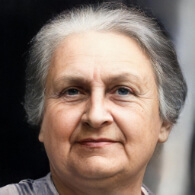Mixed Ages (Montessori)
In Montessori education, Mixed Ages classrooms are a fundamental characteristic, where children of various ages learn together in the same environment.[1] Age groupings are based on Montessori's planes of development. Children from 3 to 6 years of age learn together in the Children's House, 6 to 9-year-olds share the lower elementary level, and the upper elementary level is made up of 9 to 12-year-olds. As the work is tailored to individual progress, children learn at their own pace. This mixed age setting fosters cooperation rather than competition among children.
Montessori Quotes
- "The fundamental principle of scientific pedagogy must be, indeed, the liberty of the pupil; such liberty as shall permit a development of individual, spontaneous manifestations of the child’s nature."[2]
- "One test of the correctness of educational procedure is the happiness of the child."[3]
Research and Critiques
- Pros: Mixed age classrooms have been found to foster natural mentoring, with older children sharing knowledge with younger ones, promoting empathy, leadership skills, and social development. They can also allow for flexible learning at each child's pace.[4]
- Cons: Critics suggest that mixed-age classrooms can make it more difficult to tailor instruction to each child's developmental level. There are concerns about potential negative impacts of older children dominating classroom resources and interactions, or of younger children feeling overwhelmed.[5]
Comparisons to Other Methods
While traditional education models typically segregate children by age, Montessori education incorporates mixed-age classrooms to foster natural social interactions and accommodate varied learning paces and styles.[6]
See Also
Glossary of Montessori Terms
The Glossary of Montessori Terms is a collection of specific terms and vocabulary that are related to the Montessori method of education, primarily focusing on the theory and practice for children aged 3 to 6. The jargon used by Montessori educators offers a unique insight into child development as discussed by Maria Montessori. The 'Montepedia Glossary of Montessori Terms' originated from a glossary that was compiled by the late Annette Haines from the Montessori Training Centre of St. Louis, at the request of Molly O'Shaughnessy from the Montessori Centre of Minnesota. The reason behind the creation of this glossary was to supplement O'Shaughnessy's lecture at the Joint Annual Refresher Course that took place in Tampa, Florida, in February 2001.[7] The glossary has since been expanded and updated with additional 'Montessori Terms'.
- 3-Hour Work Cycle
- Absorbent Mind
- Adaptation
- Adolescence
- Albums
- Advisor
- Analysis of Movement
- Casa dei Bambini
- Children of the Earth
- Children's House
- Choice
- Classification
- Concentration
- Concrete to Abstract
- Control of Error
- Coordination of Movement
- Cosmic Education
- Creativity/Imagination
- Cycle of Activity
- Development of the Will
- Deviations
- Didactic Materials
- Director
- Discipline from Within
- Earth Child
- Elementary Classroom
- Erdkinder
- Exercises of Practical Life
- False Fatigue
- Freedom of Choice
- Freedom within Limits
- Grace and Courtesy
- Great Stories
- Ground Rules
- Guide
- Help from Periphery
- Human Tendencies
- Imagination
- Independence
- Indirect Preparation
- Indirect Presentation
- Isolation of a Difficulty
- Intrinsic Motivation
- Job
- Kinderhaus
- Language Appreciation
- Language Acquisition
- Learning Explosions
- Materials
- Materialised Abstractions
- Mathematical Mind
- Maximum Effort
- Mixed Ages
- Montessori Materials
- Nido
- Montessori Materials
- Normalization
- Obedience
- Peace
- Personality
- Planes of Development
- Points of Interest
- Practical Life
- Phonemic Awareness
- Phonics Instruction
- Phonological Awareness
- Prepared Environment
- Presentation
- Primary Classroom
- Psychic Embryo
- Reading Comprehension
- Repetition
- Respect
- Self-Discipline
- Self-Regulation
- Sensitive Periods
- Sensorial Materials
- Simple to Complex
- Socialization
- Society by Cohesion
- Sound Games
- Three-Hour Work Cycle
- Valorisation
- Vocabulary Enrichment
- Work
Please help to translate this page into your local language
References
- ↑ Montessori, M. (1967). The Discovery of the Child. Ballantine Books.
- ↑ Montessori, M. (1912). The Montessori Method. Frederick A. Stokes Company.
- ↑ Montessori, M. (1949). The Absorbent Mind. Clio Press.
- ↑ Lillard, A. (2017). Montessori: The Science Behind the Genius. Oxford University Press.
- ↑ Egan, K. (2002). Getting it wrong from the beginning: Our progressivist inheritance from Herbert Spencer, John Dewey, and Jean Piaget. Yale University Press.
- ↑ Mooney, C. (2013). Theories of Childhood, Second Edition: An Introduction to Dewey, Montessori, Erikson, Piaget & Vygotsky. Redleaf Press.
- ↑ Haines, A. (2001). Glossary of Montessori Terms. Montessori Training Centre of St. Louis.
